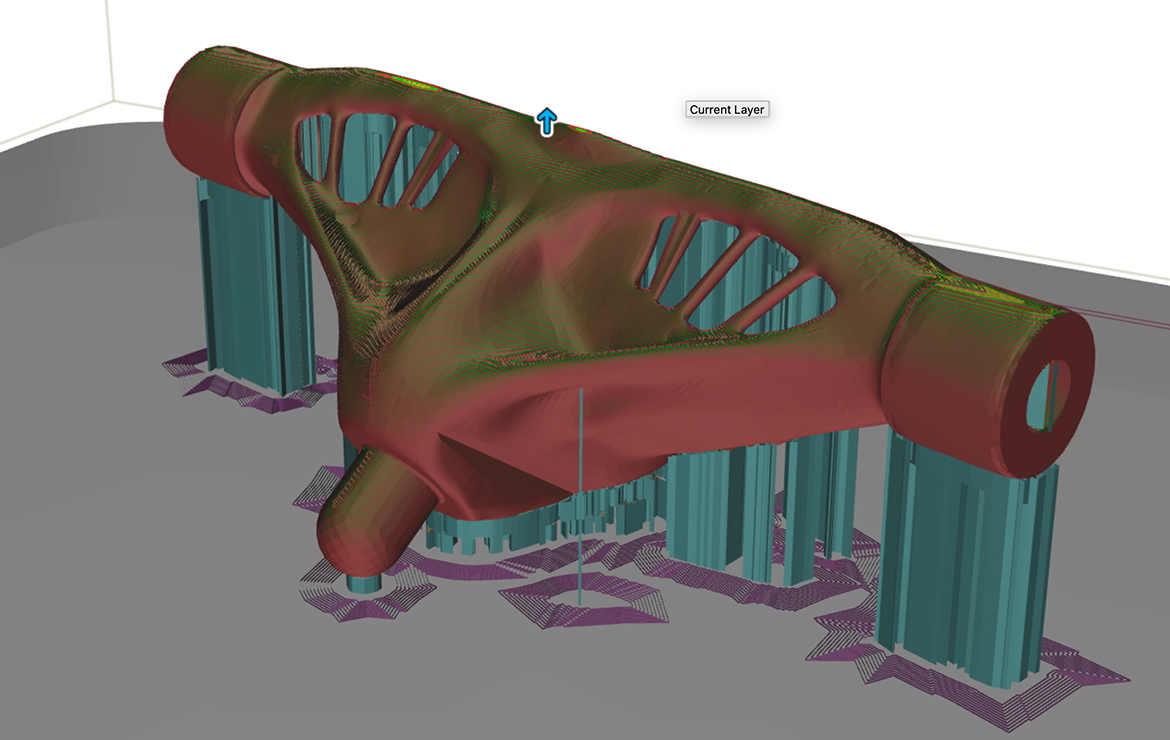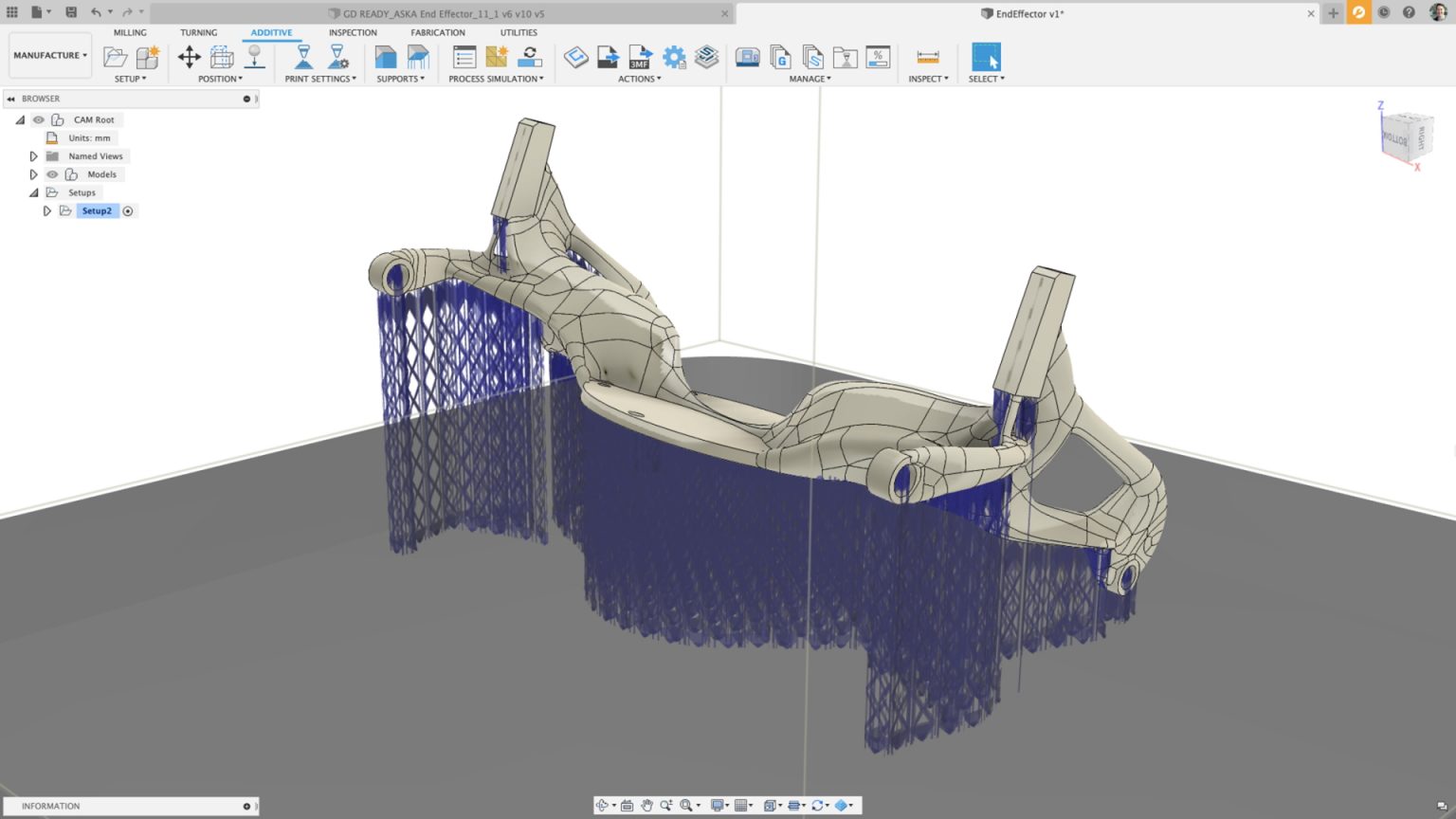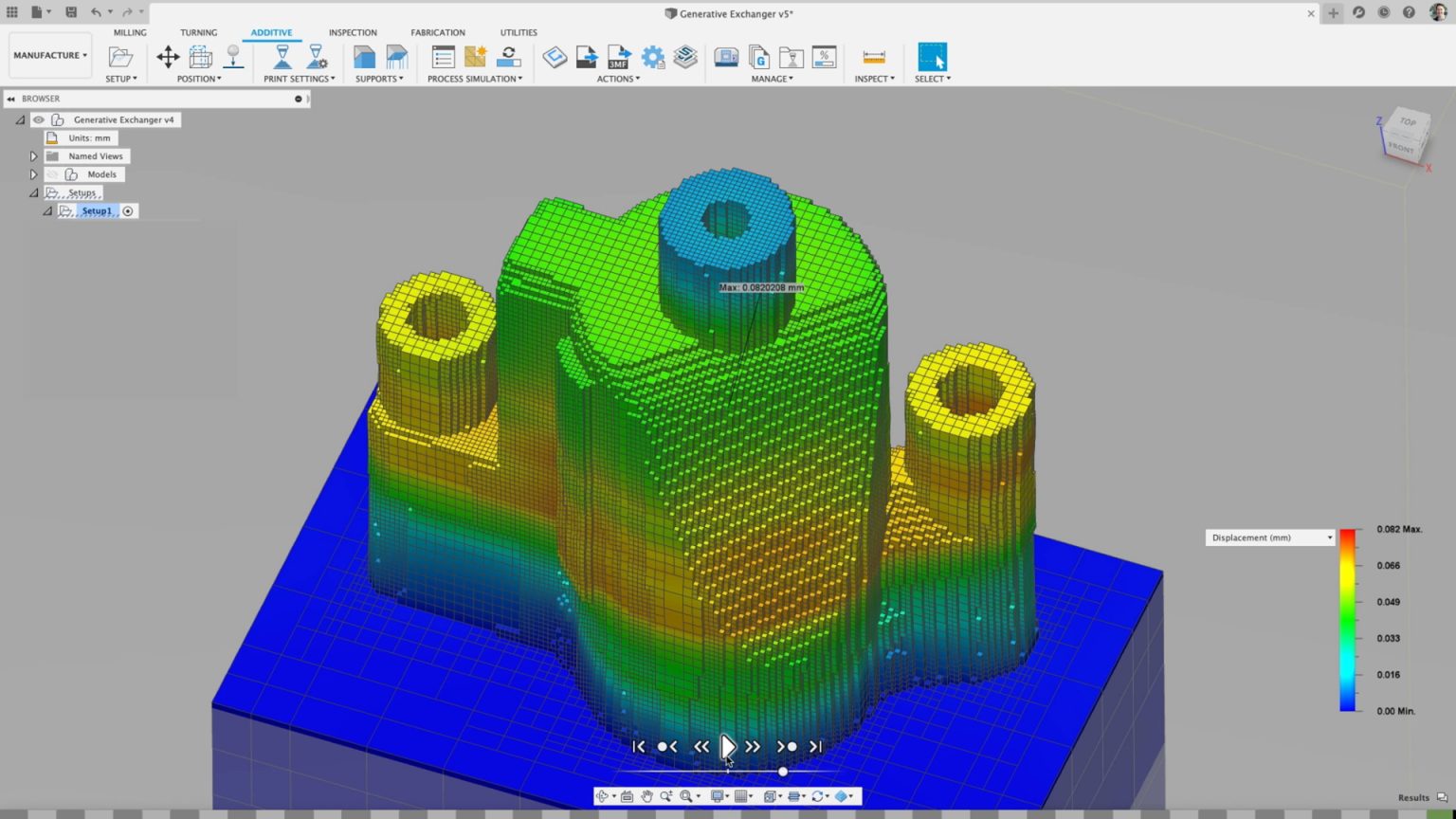When it was acquired by Autodesk in 2015, Netfabb was one of the most widely used tools for enhancing models for 3D printing, in terms of repairing files, prepping them for printing and performing topology optimization only possible with 3D printing. It was only a matter of time before Autodesk integrated it directly into Fusion 360, its powerful, all-in-one modeling software.
That time has come and now, Netfabb subscribers will have access to Fusion 360 and its Additive Build Extension, as well as an upcoming Additive Simulation Extension. Netfabb users will also be able to access Fusion 360 Team and HSMWorks. Netfabb Premium and Ultimate will now include the Additive Build Extension metal additive manufacturing job prep. Ultimate users will also obtain the Additive Simulation Extension when it is released.
“We see additive manufacturing as one of the most revolutionary technologies in the industry, offering numerous well-known benefits that include shorter time to market, lighter products and reduced waste,” said Sualp Ozel, Senior Product Manager for additive technologies in Fusion 360. “At Autodesk, we’re looking to remove all the hurdles that slow down the design and manufacturing processes, making it instead one smooth workflow within a single toolset. This change will provide Autodesk users the right set of tools they need to both develop and manufacture innovative products.”
Even before former CEO Carl Bass left the company, Autodesk had been steadily building a unified platform for all manufacturing that has come to be Fusion 360. This meant that, through the design tool, it would be possible to send models over to subtractive manufacturing programs, for instance, to prepare for CNC milling. At the same time, the company has been transitioning to an all cloud-based model. One of the most unique features of the software is that, in addition to utilizing this holistic approach, Fusion 360 is free for non-commercial users.

Generatively designed skateboard truck made for Braille Skateboarding, with print prep completed in Fusion 360.
Meanwhile, Autodesk aimed to be a leader in generative design through Project Dreamcatcher, which ultimately became the Generative Design Extension for Fusion 360. Because Fusion 360 is meant to be user friendly, these developments, including this news regarding Netfabb integration, suggest that advanced design tools will be more easily accessible to a wide variety of users.
Future extensions to Fusion 360 will see greater integration, including a Manage Extension for product data and lifecycle management (PDM/PLM) functionality. This includes automatic part numbers, ECOs, process workflows. The Additive Simulation Extension, which is meant to be available in January, will make it possible to simulate metal 3D printing scenarios before printing. A Nesting & Fabrication Extension will improve sheet metal production, allowing for nesting of designs based on material, thickness and other variables. An Injection Molding Extension will make it possible to prep models for manufacturability via injection molding, with simulation for pack, fill and warpage.
With all of this in mind, it’s worth considering the larger 3D printing software segment. In its “Opportunities in Additive Manufacturing Software Markets 2020” report, SmarTech Analysis projects 3D printing software to become a $3.7 billion industry by 2027. A 3DPrint.com PRO article from 2020 sees Scott Dunham, Vice President of Research for SmarTech Analysis, describe a new trend emerging in this space. 3D printing software is not just becoming more powerful but is becoming increasingly integrated into larger software packages as users demand that 3D printing tools behave more like traditional manufacturing tools.
At this point in its maturation, large software companies are now competing more directly with one another with regard to their additive offerings. The four major CAD companies—Dassault Systèmes, Siemens, Autodesk and PTC—have all developed additive capabilities for their programs, sometimes going so far as to include 3D printing simulation tools necessary for ensuring the proper production of metal 3D printed parts. That Autodesk is introducing its own simulation extension is signal for where the path is headed: greater industrialization of additive systems and software and greater integration on the part of the big developers.
All images courtesy of Autodesk unless otherwise stated.
Subscribe to Our Email Newsletter
Stay up-to-date on all the latest news from the 3D printing industry and receive information and offers from third party vendors.
Print Services
Upload your 3D Models and get them printed quickly and efficiently.
You May Also Like
Making Space: Stratasys Global Director of Aerospace & Defense Conrad Smith Discusses the Space Supply Chain Council
Of all the many verticals that have been significant additive manufacturing (AM) adopters, few have been more deeply influenced by the incorporation of AM into their workflows than the space...
EOS in India: AM’s Rising Star
EOS is doubling down on India. With a growing base of aerospace startups, new government policies, and a massive engineering workforce, India is quickly becoming one of the most important...
PostProcess CEO on Why the “Dirty Little Secret” of 3D Printing Can’t Be Ignored Anymore
If you’ve ever peeked behind the scenes of a 3D printing lab, you might have caught a glimpse of the post-processing room; maybe it’s messy, maybe hidden behind a mysterious...
Stratasys & Automation Intelligence Open North American Tooling Center in Flint
Stratasys has opened the North American Stratasys Tooling Center (NASTC) in Flint, Michigan, together with automation integrator and software firm Automation Intelligence. Stratasys wants the new center to help reduce...






































